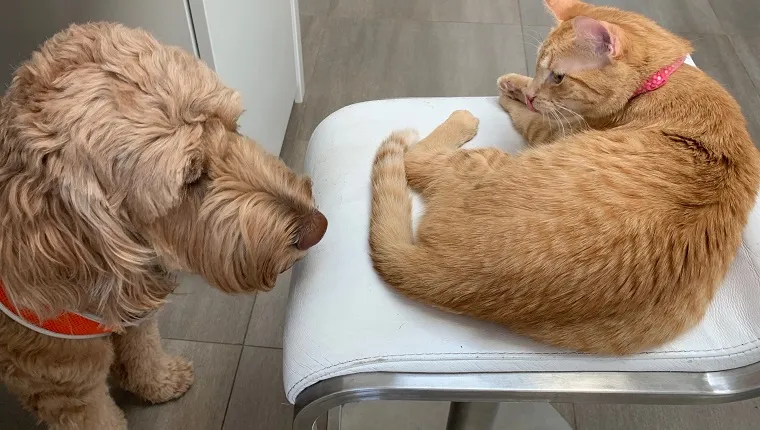A flea infestation comes about when fleas decide to take up residence in your cat’s fur and drink your feline’s blood. If you notice your cat scratching much more than usual or in a more frantic way, there’s a chance they might have picked up fleas.
Contrary to popular belief, even indoor cats can suffer from flea infestations. If you see signs of fleas on your cat, then you should consult your veterinarian right away so they can prescribe treatment.
Here’s what you should know about the symptoms, causes, and treatments for fleas in cats.
Symptoms & Signs Of Fleas In Cats
The most obvious symptom of fleas in cats is scratching and itching more than usual. If you notice your cat suddenly scratching much more, as if they’re in pain or highly irritated, try using a flea comb to look for signs of fleas.
Adult fleas are visible to the naked eye, but they’re fast and can easily hide in your cat’s fur. They are usually brown or reddish brown in color and have six legs.
Because fleas are so small and quick, you may be able to spot what is known as “flea dirt” more easily. Flea dirt is the feces of fleas. It may look like tiny grains of pepper or flecks of dirt.
You can find it fairly easily on cats with light colored fur, but it may be more difficult to spot against dark fur. To confirm that it’s flea dirt and not ordinary dirt, you can run a comb through your cat’s coat, which should pull some of the dirt off and possibly some adult fleas, as well.
Place the residue on a wet paper towel. Flea dirt will appear to have a rust color as it dissolves because it contains traces of blood, while regular dirt will be black or dark brown.
Flea bites appear, like other insect bites, as small, red lesions. The most common places that flea bites appear are on the groin, hind legs, and the back between the ribs and the tail.
Beyond the irritation that comes from being bitten by fleas, if the infestation is left untreated, some other conditions might also arise. Common secondary conditions caused by fleas include:
- Tapeworms (a parasite that fleas carry)
- Mycoplasma Haemofelis
- Anemia
Causes Of Fleas In Cats

The principal way that a cat catches fleas is by coming into contact with another animal that’s currently carrying fleas. Fleas can hop from one animal to the next.
Additionally, flea eggs can also be present in carpets and furniture, especially if an infestation is not properly dealt with. Flea eggs are smaller than grains of sand, clear, and shaped like ovals.
You may not be able to see flea eggs on your cat. But you may notice them on your cat’s bedding or favorite napping place.
When it comes to indoor cats, allowing an outside animal into the home or a human bringing flea eggs home on their clothes are the main ways felines could catch fleas.
Treatments Of Fleas In Cats
The first step to getting rid of fleas on your cat is to use a flea comb to identify the offending parasites and start to remove them. Bathing the cat with a gentle shampoo or a product specifically formulated for cats is the next step.
After bathing, most vets will advise you to use a topical flea preventative. These droplets are placed on the cat, usually around the neck, and work by targeting a flea’s nerve receptors. Ask your vet for a recommended product.
If you live in a multiple cat or pet household, you’ll also need to ensure that all animals undergo flea prevention measures; otherwise, you might find the fleas simply moving from one animal to another.
Note: It’s imperative that you use flea control products designed for cats. Flea control medicines for dogs could harm your cat.
At this point, you can also consider purchasing a special flea collar. You should consult your vet.
Beyond your cat, you’ll also want to thoroughly wash all bedding in the household, along with vacuuming. This is to make sure you destroy any remaining flea eggs.
Have you cared for a cat who picked up fleas? How did you get rid of the infestation? Share your experience in the comments section below!
Click the bold links in the article to shop for your cat and support our content!









